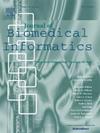药物重新定位的自适应去偏学习
IF 4.5
2区 医学
Q2 COMPUTER SCIENCE, INTERDISCIPLINARY APPLICATIONS
引用次数: 0
摘要
药物重新定位是当前药物开发的关键,旨在为现有药物寻找新用途,为药物发现提供有效和具有成本效益的途径。近年来,基于图神经网络的深度学习方法在药物重新定位任务中取得了显著的成功。然而,很少有研究分析数据集的特征以减轻潜在的数据偏差。在本文中,我们分析了三种常用的药物重新定位数据集,并确定了它们之间的一致特征:节点极化趋势,其特征是存在流行实体(那些经常发生且广泛关联的实体)和长尾实体(那些出现频率较低且关联较少的实体)。基于这一发现,我们提出了一个带有去偏机制的深度学习框架,称为DRDM。该框架擅长于解决流行实体的偏见,这些偏见往往掩盖了长尾实体的微妙模式——这是新颖见解的关键。DRDM在训练过程中动态调整关联权值,增强长尾实体表征,减少偏差。此外,我们采用双视图对比学习提供丰富的监督信号,从而进一步增强模型的鲁棒性。我们在这三个数据集上对我们的方法进行了实验,结果表明,与竞争模型相比,我们的方法具有很强的竞争力。案例研究进一步强调了该模型在实际应用中的潜力,可以为未来的药物发现提供新的见解。本文章由计算机程序翻译,如有差异,请以英文原文为准。

Adaptive debiasing learning for drug repositioning
Drug repositioning, pivotal in current pharmaceutical development, aims to find new uses for existing drugs, offering an efficient and cost-effective path to drug discovery. In recent years, graph neural network-based deep learning methods have achieved significant success in drug repositioning tasks. However, few studies have analyzed the characteristics of datasets to mitigate potential data biases. In this paper, we analyzed three commonly used drug repositioning datasets and identified a consistent characteristic among them: a trend of node polarization, characterized by the presence of popular entities (those commonly occurring and extensively associated) and long-tail entities (those appearing less frequently with fewer associations). Based on this finding, we propose a deep learning framework with a debiasing mechanism, called DRDM. The framework excels in addressing popular entities’ biases, which often overshadow the subtle patterns in long-tail entities—key for novel insights. DRDM dynamically adjusts association weights during training, enhancing long-tail entity representation and reducing bias. In addition, we employ dual-view contrastive learning to provide rich supervisory signals, thereby further enhancing the model’s robustness. We conducted experiments with our method on these three datasets, and the results demonstrated that our approach exhibits strong competitiveness compared to competing models. Case studies further highlighted the potential of the model in practical applications, which could provide new insights for future drug discovery.
求助全文
通过发布文献求助,成功后即可免费获取论文全文。
去求助
来源期刊

Journal of Biomedical Informatics
医学-计算机:跨学科应用
CiteScore
8.90
自引率
6.70%
发文量
243
审稿时长
32 days
期刊介绍:
The Journal of Biomedical Informatics reflects a commitment to high-quality original research papers, reviews, and commentaries in the area of biomedical informatics methodology. Although we publish articles motivated by applications in the biomedical sciences (for example, clinical medicine, health care, population health, and translational bioinformatics), the journal emphasizes reports of new methodologies and techniques that have general applicability and that form the basis for the evolving science of biomedical informatics. Articles on medical devices; evaluations of implemented systems (including clinical trials of information technologies); or papers that provide insight into a biological process, a specific disease, or treatment options would generally be more suitable for publication in other venues. Papers on applications of signal processing and image analysis are often more suitable for biomedical engineering journals or other informatics journals, although we do publish papers that emphasize the information management and knowledge representation/modeling issues that arise in the storage and use of biological signals and images. System descriptions are welcome if they illustrate and substantiate the underlying methodology that is the principal focus of the report and an effort is made to address the generalizability and/or range of application of that methodology. Note also that, given the international nature of JBI, papers that deal with specific languages other than English, or with country-specific health systems or approaches, are acceptable for JBI only if they offer generalizable lessons that are relevant to the broad JBI readership, regardless of their country, language, culture, or health system.
 求助内容:
求助内容: 应助结果提醒方式:
应助结果提醒方式:


